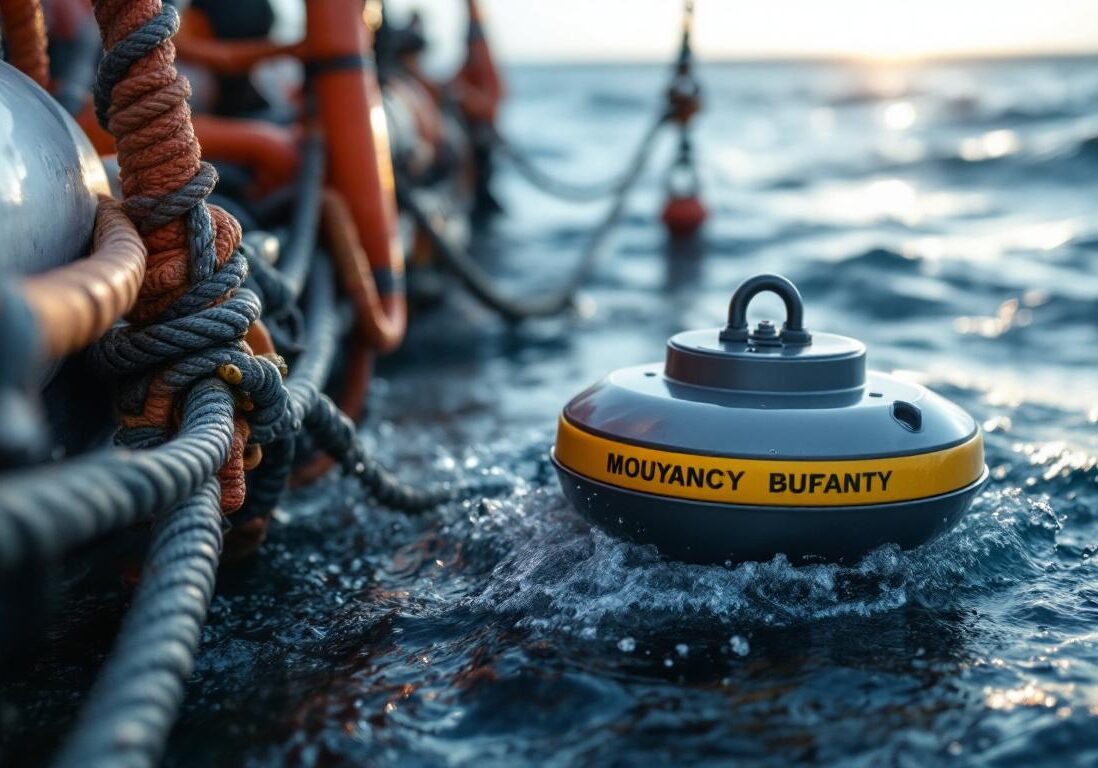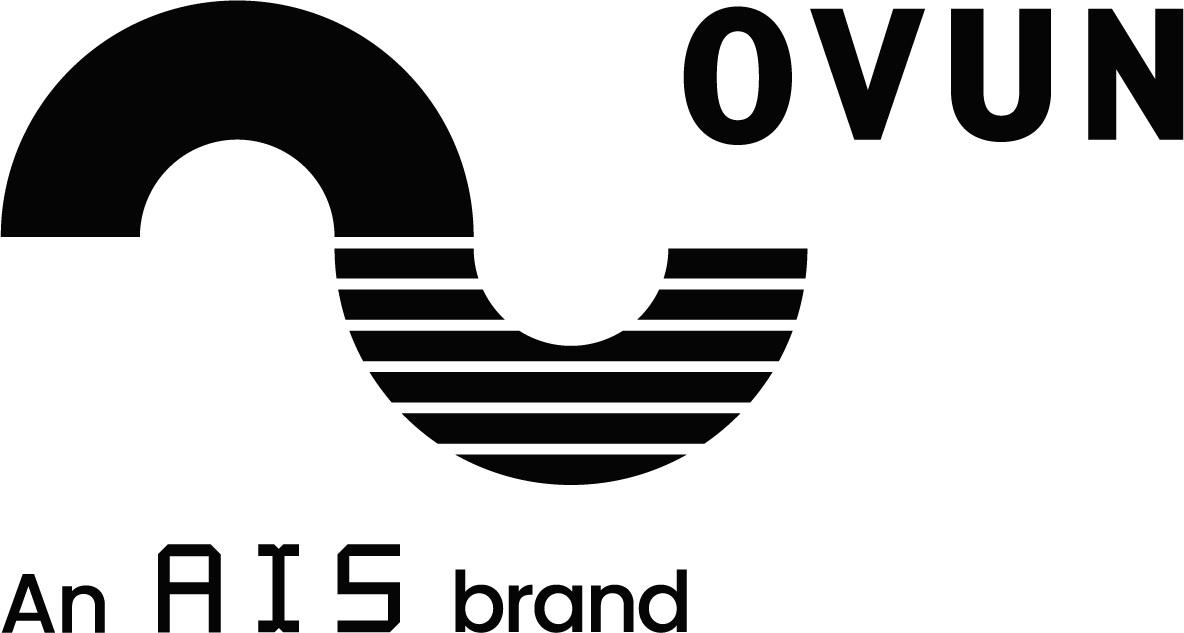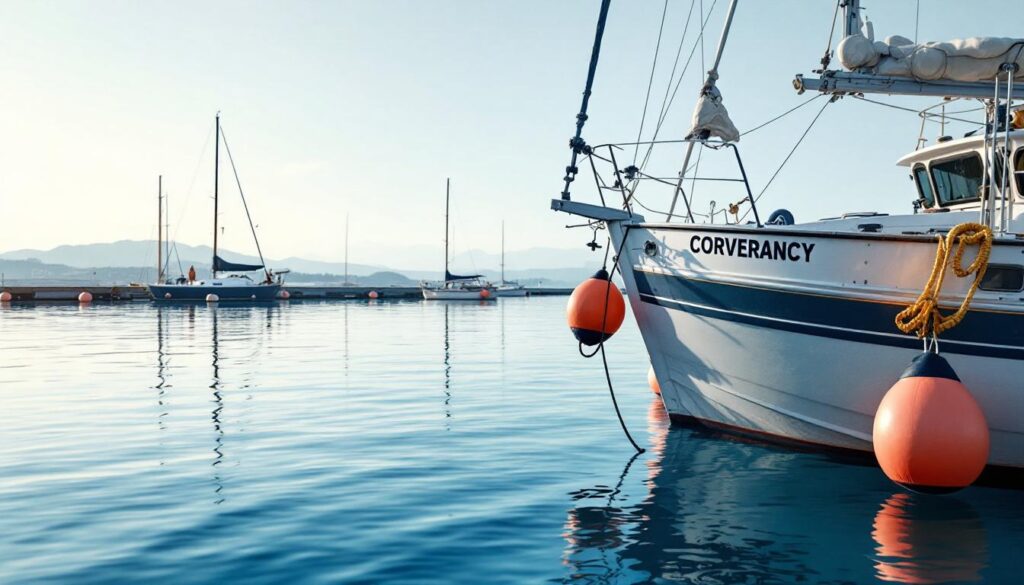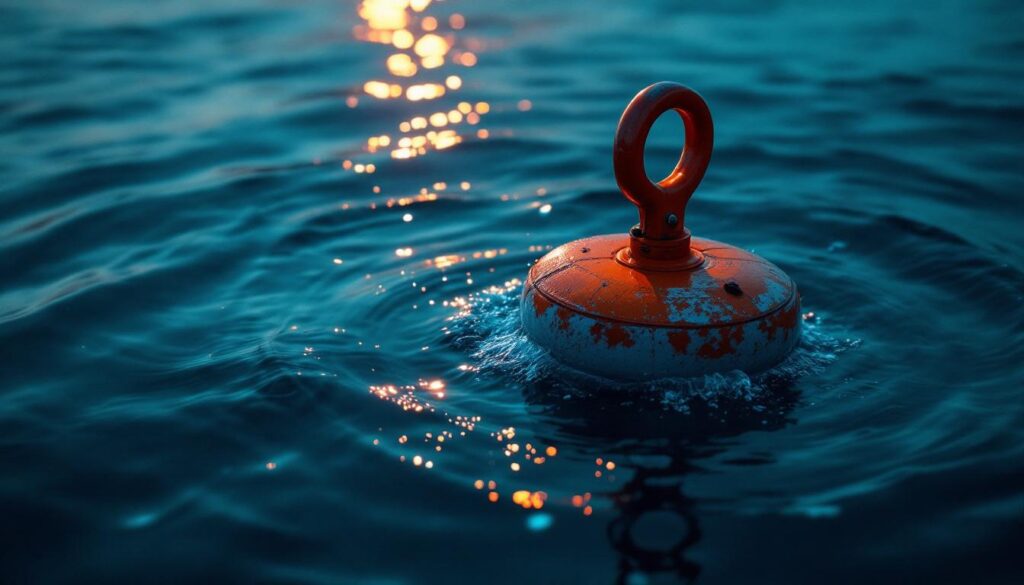Nov 25, 2025
Buoyancy modules for reliable mooring lines

When a mooring line sags or drags along the seabed, it can cause serious problems – from increased wear and tear to unexpected failures. Buoyancy modules are the unsung heroes that keep mooring lines afloat, ensuring they perform reliably under harsh marine conditions. Understanding how these modules work and why they are essential can make all the difference in maintaining a safe and efficient offshore operation.
What are buoyancy modules and how do they work?
Buoyancy modules are specialized devices attached along mooring lines to provide positive buoyancy. Essentially, they help lift heavy cables and chains off the seabed, preventing them from resting on rough surfaces or getting tangled with underwater obstacles.
These modules are usually made of lightweight, durable materials like syntactic foam or engineered plastics. Their design allows them to withstand high pressure and harsh environmental conditions while maintaining buoyancy over long periods. By distributing buoyancy evenly along the mooring line, the modules reduce tension peaks and minimize abrasion.
In addition to their primary function of providing buoyancy, these modules also play a crucial role in enhancing the overall stability of mooring systems. By keeping the mooring lines elevated, buoyancy modules help to mitigate the effects of currents and waves, which can otherwise cause excessive movement and stress on the mooring structure. This stability is particularly important in marine environments where dynamic conditions can lead to significant wear and tear on mooring equipment, ultimately extending the lifespan of the entire system.
Furthermore, buoyancy modules are often designed with specific applications in mind, such as supporting floating platforms, subsea equipment, or even aquaculture installations. Their versatility allows them to be customized in terms of size, shape, and buoyancy characteristics to meet the unique demands of various marine projects. As technology advances, innovations in buoyancy module design continue to emerge, incorporating features like integrated sensors for real-time monitoring of environmental conditions, which can further enhance operational safety and efficiency.
Why is buoyancy important for mooring lines?
Mooring lines are the lifelines that keep floating structures like oil platforms, floating wind turbines, and ships anchored securely. Without buoyancy modules, these lines would lay directly on the seabed, exposing them to abrasion, corrosion, and fatigue from constant movement and contact with sharp objects. The seabed can be an unpredictable environment, with varying topographies and potential hazards such as rocks, debris, and marine life that could compromise the integrity of the mooring lines. In this context, buoyancy modules act as a protective barrier, elevating the lines above these risks and ensuring they remain functional over time.
Buoyancy modules help maintain the correct catenary shape of the mooring line, which is crucial for absorbing dynamic forces caused by waves, currents, and wind. This shape reduces stress on the anchors and the floating structure itself, prolonging the lifespan of the entire mooring system. Additionally, the use of buoyancy aids in stabilizing the floating structures, allowing them to respond more effectively to environmental forces. This stability is particularly vital in extreme weather conditions, where the risk of capsizing or structural failure increases significantly. By mitigating these risks, buoyancy not only enhances safety but also contributes to the operational efficiency of marine installations, enabling them to function optimally even in challenging conditions.
Moreover, the design and material of buoyancy modules have evolved significantly, with advancements in technology leading to the development of lightweight and durable materials that can withstand harsh marine environments. These innovations have made it possible to create more efficient mooring systems that require less maintenance and offer greater reliability. The integration of smart technologies, such as sensors within buoyancy modules, allows for real-time monitoring of the mooring lines’ condition, providing valuable data that can be used to predict wear and prevent potential failures before they occur. This proactive approach to maintenance not only saves costs but also enhances the overall safety of maritime operations.
Types of buoyancy modules used in mooring lines
Syntactic foam modules
Syntactic foam is one of the most common materials used for buoyancy modules. It consists of hollow microspheres embedded in a resin matrix, providing excellent strength-to-weight ratio and resistance to deep-sea pressure. These modules are highly durable and can maintain buoyancy even at great depths. The unique composition of syntactic foam allows it to withstand extreme temperatures and corrosive environments, making it particularly suitable for deep-water applications. Additionally, the lightweight nature of these modules reduces the overall weight of the mooring system, which is crucial for maintaining stability in dynamic marine conditions.
Flexible buoyancy sleeves
Flexible sleeves are designed to wrap around mooring lines, offering buoyancy while allowing some movement and flexibility. They are often made from elastomeric materials and are easier to install on existing lines. These sleeves protect the line from abrasion and reduce the risk of entanglement. The adaptability of flexible buoyancy sleeves makes them an excellent choice for various mooring configurations, as they can accommodate different line sizes and shapes. Furthermore, their design often includes features like integrated wear indicators, which help operators monitor the condition of the sleeves and schedule maintenance or replacements proactively, thus enhancing the overall safety and efficiency of the mooring system.
Hard shell modules
Hard shell modules feature a rigid outer casing that protects the buoyant core from mechanical damage. They are typically used in environments where mooring lines face heavy impact or abrasion risks. Their robust design ensures long-term reliability, especially in challenging offshore conditions. The hard shell construction not only provides physical protection but also allows for the incorporation of additional features, such as attachment points for monitoring sensors or other equipment. This versatility enables operators to gather valuable data on mooring line performance and environmental conditions, ultimately leading to improved operational decision-making. Moreover, hard shell modules can be engineered to meet specific project requirements, including customized shapes and sizes, ensuring optimal performance across a range of marine applications.
Installation and maintenance considerations
Proper installation of buoyancy modules is critical to their performance. Modules must be spaced correctly along the mooring line to provide even buoyancy and avoid creating stress concentrations. Installation can take place either during initial mooring line deployment or as a retrofit on existing lines. It is essential to follow manufacturer guidelines and industry standards during the installation process to ensure optimal functionality. Additionally, using the right tools and equipment can significantly enhance the efficiency of the installation, minimizing the risk of human error.
Regular inspection and maintenance are necessary to detect any damage or loss of buoyancy. Over time, modules can degrade due to environmental exposure or mechanical impacts. Early identification of issues helps prevent catastrophic mooring failures. Inspections should include checking for signs of wear, such as cracks, discoloration, or deformation, which may indicate that a module is no longer performing as intended. Moreover, it is advisable to maintain a detailed log of maintenance activities and inspections, as this can provide valuable insights into the longevity and performance trends of the buoyancy modules over time.
In addition to routine inspections, environmental factors play a significant role in the longevity of buoyancy modules. For instance, exposure to harsh marine conditions, such as saltwater, UV radiation, and extreme temperatures, can accelerate the degradation process. Therefore, selecting materials that are resistant to these elements is crucial. Furthermore, implementing protective measures, such as coatings or shields, can help extend the lifespan of the modules. Understanding the specific environmental conditions in which the mooring system operates can guide the selection of appropriate buoyancy solutions, ensuring they remain effective throughout their service life.
How do buoyancy modules improve safety and operational efficiency?
By keeping mooring lines off the seabed, buoyancy modules reduce wear and tear, which lowers the risk of sudden line failure. This enhances the overall safety of offshore operations, protecting personnel, equipment, and the environment.
Operational efficiency is also improved because buoyant mooring lines require less frequent replacement and maintenance. This means fewer interruptions and downtime, which is critical for continuous offshore production or maritime activities.
Additionally, buoyancy modules contribute to the stability of floating structures by maintaining optimal tension in the mooring lines. This stability is particularly important in harsh marine environments where wave action and currents can exert significant forces on moored vessels or platforms. By ensuring that mooring lines remain taut and properly positioned, buoyancy modules help to mitigate the risk of swaying or drifting, which can lead to dangerous situations and operational delays.
Furthermore, the use of buoyancy modules can enhance the overall design of mooring systems. By allowing for more flexible configurations, operators can adapt to various environmental conditions and site-specific challenges. This adaptability not only supports better performance but also enables the integration of advanced technologies, such as dynamic positioning systems, which rely on precise mooring to maintain vessel location. As a result, the combination of buoyancy modules and modern mooring techniques leads to a more resilient and efficient operational framework in offshore industries.
Frequently Asked Questions (FAQ)
What happens if a mooring line does not have buoyancy modules?
Without buoyancy modules, mooring lines tend to rest on the seabed, leading to increased abrasion and fatigue. This can cause premature failure of the line, risking the stability of the anchored structure and potentially causing costly and dangerous accidents. Additionally, the lack of buoyancy can lead to a phenomenon known as “snagging,” where the line becomes entangled with underwater structures or debris, further exacerbating wear and tear. In environments with strong currents or wave action, this situation can become even more critical, as the constant movement can lead to rapid degradation of the line’s integrity.
Can buoyancy modules be added to existing mooring lines?
Yes, buoyancy modules can be retrofitted onto existing mooring lines. Flexible sleeves or clamp-on modules are often used for this purpose, allowing operators to enhance line performance without replacing the entire mooring system. This retrofitting process is not only cost-effective but also minimizes downtime, which is crucial in commercial operations where every moment counts. Moreover, advancements in buoyancy module technology have led to the development of lightweight and durable materials that can be easily integrated into older systems, providing a significant boost in performance and safety.
How do environmental conditions affect buoyancy modules?
Environmental factors such as water pressure, temperature, salinity, and marine growth can impact buoyancy modules. High pressures at depth require materials like syntactic foam that resist compression. Marine growth can add weight and reduce buoyancy, so regular inspection is important. Furthermore, temperature fluctuations can affect the material properties of buoyancy modules, potentially leading to changes in their buoyancy characteristics over time. Operators must be vigilant in monitoring these conditions, as neglecting to do so can lead to unexpected failures during critical operations, especially in harsher marine environments.
Are buoyancy modules used only in deep water applications?
No, buoyancy modules are used in both shallow and deep water mooring systems. While deep water applications demand materials that withstand high pressure, even shallow water mooring lines benefit from buoyancy to reduce abrasion and maintain proper line geometry. In fact, the use of buoyancy modules in shallow waters can significantly improve the overall efficiency of mooring systems by minimizing the risk of line entanglement and ensuring that the lines remain properly oriented. This versatility makes buoyancy modules an essential component in a wide range of marine operations, from offshore oil rigs to aquaculture farms.
How do buoyancy modules affect mooring line tension?
Buoyancy modules help distribute the load more evenly along the mooring line by maintaining its shape and reducing contact with the seabed. This reduces peak tensions and dynamic loading, which in turn increases the lifespan of the mooring system and improves stability. Additionally, by minimizing the risk of excessive tension, buoyancy modules can help prevent the occurrence of slack in the mooring lines, which can lead to dangerous snap-back situations. The overall result is a more reliable mooring system that can better withstand the forces exerted by wind, waves, and currents, ensuring the safety and operational efficiency of marine structures.
Choosing the right buoyancy modules for your mooring system
Selecting the appropriate buoyancy modules depends on several factors: water depth, environmental conditions, mooring line type, and operational requirements. Consulting with marine engineers and buoyancy specialists can ensure the modules meet the specific needs of your project.

Considerations include the module’s buoyancy capacity, durability, ease of installation, and compatibility with existing mooring equipment. The right choice will maximize reliability and safety while minimizing maintenance.
Future trends in buoyancy technology for mooring lines
Advancements in materials science are driving the development of lighter, stronger, and more environmentally friendly buoyancy modules. Innovations such as bio-based syntactic foams and smart modules with embedded sensors are emerging.
These smart modules can monitor line tension, detect damage, and provide real-time data to operators, enhancing predictive maintenance and reducing risks. As offshore operations expand into deeper and more challenging environments, buoyancy technology will continue to evolve to meet these demands.
Final thoughts
Buoyancy modules play a crucial role in maintaining the integrity and performance of mooring lines. They protect lines from damage, improve safety, and support efficient offshore operations. Understanding their function and selecting the right type for your application can prevent costly failures and extend the life of your mooring system.
Reliable mooring is the foundation of successful offshore ventures, and buoyancy modules are key to achieving that reliability.
At Ovun, we understand the critical role buoyancy modules play in ensuring the reliability and longevity of your mooring systems. Our expertise in rotational- and polyurethane moulding, combined with our commitment to electronics development and plastic recycling, positions us to offer innovative solutions that enhance safety and performance in the most demanding marine environments. By partnering with us, you benefit from a collaborative approach to product development, where your feedback drives the creation of smarter, sustainable solutions. Embrace the future of offshore operations with Ovun, where we turn the ocean into a safe, profitable, and sustainable workplace. Contact us today to learn how our buoyancy modules can support your offshore ventures.



